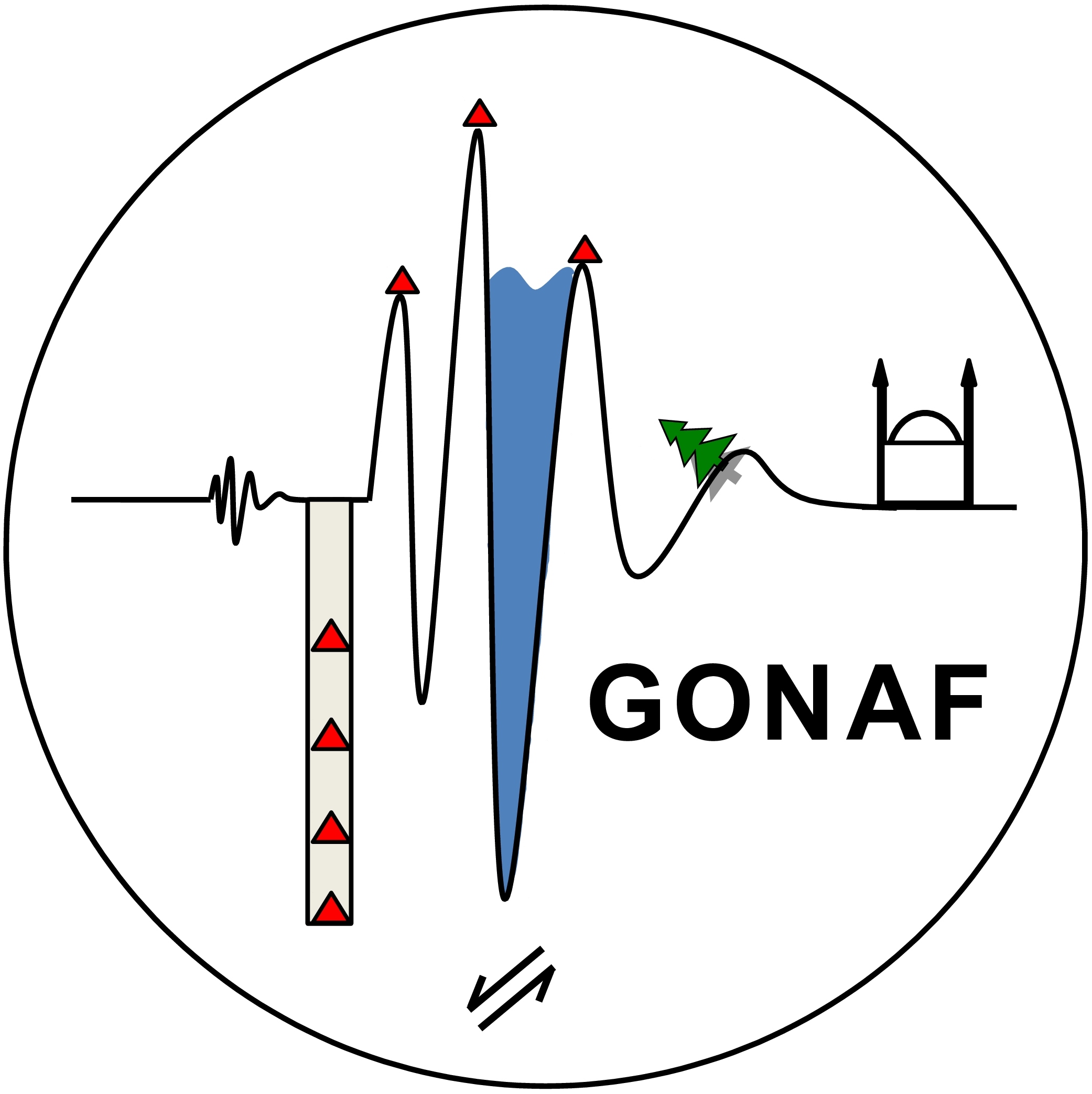Station instrumentation
The seismic sensors deployed in the GONAF borehole are all passive sensors and were selected to cover the entire frequency range intended to be studied. This is primarily defined by the local seismicity that occurs down to the base of the seismogenic layer at ~18 km, resulting in signal frequencies up to a few tens of Hertz (Bohnhoff et al., 2013). However, it is also intended to cover higher frequencies of events occurring near individual wells as well as to detect potentially occurring low-frequency events. All GONAF stations are equipped with a 18-channel Guralp 24-bit data logger with variable gain and integrated pre-amplifiers.
The GONAF vertical seismic arrays are comprised of three Sercel 1 Hz L4 vertical component sensors placed at depths of 75, 150, and 225 m, and also Sercel 1 Hz L4 (gimbaled), Geospace 2 Hz HS-1 (gimbaled), and 15 Hz DS2500 three-component sensors at the bottom hole location at 300 m depth. The L4s were selected as they are widely used in local and regional surface seismic networks worldwide, forming something of an international standard. The tilt sensitivity of the seismographs with natural frequencies below about 12 Hz required vertical borehole which was achieved to within 1°.
All sensors were cemented in the boreholes to ensure good coupling and long-term cable stability. The seismic waveform data are currently sampled at 500 Hz by 18-channel Guralp CMG-DM recorders. These recorders are specially equipped with 0.1 × 10−6 V self-noise pre-amplifiers in order to exceed the self-noise of downhole sensors. The data are then transmitted in real time to GFZ and AFAD headquarters for archiving and analysis.
All the seismic sensors were tested prior to deployment. Individual sensors were then attached to the 60 mm cementing trim tube and lowered into the borehole. Once the entire string was lowered into the borehole, the entire well was cemented from the bottom up. Each GONAF station is covered with a 10 ft container to house the 18-channel data logger and its support equipment.
The four GONAF strainmeter installations were completed after the seismic stations were in place. The main sensors in these installations are GTSM strainmeters, each with three horizontal strain gauges placed at 120° separations along with a fourth redundant gauge offset 30° from the principal axis (Gladwin, 1984; Gladwin and Hart, 1985). A 3-C Geospace 2 Hz HS-1 seismometer is included as a standard part of these systems. Their 100 m deep wells were first logged to find the most competent rock sections. Then, using the same installation methods as developed for the US Plate Boundary Observatory, the sensors were lowered into a pre-loaded slug of expansive grout at the selected depth.




